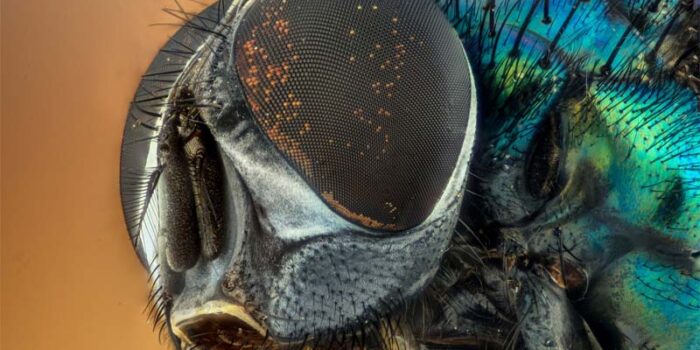All insects have belonged to the phylum Arthropoda. But some are different because they have three pairs of jointed legs, segmented bodies, an exoskeleton, and a pair of antennae and wings. They are found almost everywhere, and almost they are around ten quintillions on the globe. Insects are essential to all ecosystems. They are responsible for the pollination of plants, decomposition of plants, animal matter, and the most important source of food. Birds alone are consuming around 400 to 500 million tons of insects per year. Insects have many facts that will increase your acquaintance.
10. Their Colors Serve a Purpose
Some insects are dull and drab, but you can see many colored insects that look amazing. Some are splendid and glittery, with the combination of fiery orange, royal blue, or emerald green. Whether an insect seems dull or bright, its colors and patterns play an important purpose vital to that insect’s survival. An insect’s color can assist it to avoid opponents and find mates. Certain colors and patterns, called aposematic shade, inform potential predators that if they consume, it then it can be a bad choice for them. Their coloration also assists them to blend in with the surroundings easily. Furthermore, it also helps the, to capture sunlight and provide warmness too.
09. All have Same Mouthparts, but Use Them Differently
Another one of the facts about insects that they almost have the same basic structures but all of them use them differently. The labrum and labium fundamentally purpose as the upper and lower lips, correspondingly. The hypopharynx is a tongue-like structure that develops forwardly. The mandibles are the jaws, and lastly, the maxillae may work for several purposes, including tasting, grinding, and holding the diet, etc.
These structures are altered discloses a lot about how and what an insect consumes. The type of mouthparts an insect can identify its systematic order. True bugs have mouthparts adapted for piercing and drinking liquids. Insects that get diet from blood, like parasites, also have pierced, sucking mouthparts. Butterflies and moths also drink liquors and have mouthparts shaped into a nose or straw for doing so capably. Beetles have chomping mouthparts, as do hoppers and stick insects.
08. They Rule the World
If we say they rule over the world, then it wouldn’t wrong. Insects reside in almost every corner of the world. They live on glaciers, forests, in scorching deserts, and even on the surface of the oceans also. It is one of the facts about insects they have adapted to live in the darkness of caverns and at altitudes.
Insects are the planet’s most well-organized decomposers because they are breaking down everything from skeletons to dung to collapsed woods. They control wildflowers, kill crop pests, and fertilize crops and other flowering floras. Besides this, they carry viruses, like bacteria, and protozoa too. They farm fungus, disperse seeds, and even control populations of huge creatures by infecting them with diseases and sucking their blood.
07. Insects have two antennae
Antennae are sensory organs that have linked to the head of an insect. They are present in some insects for fulfilling different purposes. Facts about insects that these antennae are made up of different segments and assist them to feel, smell and even hear.
06. Insects have three pair of legs
Insects are different from huge creatures most of them have two or four legs. One of the main facts about insects that they have three pairs of legs. And each pair of legs even has a specific name based on structure. They have forelegs, mid-legs, and hind-legs. They use all their legs for moving around, catching their prey, and formatting as well.
05. Compound eyes
Another one of the facts about insects, that they have compound eyes which, serve many purposes to them. They have a bunch of little visual units that place together a larger image. They seem like a jigsaw puzzle. Each unit of eye sees just a part of the mystery, but when the mystery is complete, you get the whole picture!Breathing through their sides Insects do not breathe through their mouths instead, they inhale oxygen and exhale carbon dioxide through their holes called spiracles in their exoskeletons. These holes look like insects’ thoraxes and abdomens. Their respiratory systems are not repaired into the creatures’ circulatory systems, as humans have, where the lungs exchange gases with the arteries. They have a cardiovascular-like net of tubes, which are called a tracheal system. This system removes carbon dioxide from each cell in the animals’ bodies.
04. Blood bath
Insects are way different from humans’. They have an open circulatory system, in which their blood, called “hemolymph,” cleans the organs. The insect “heart” is a segmented and chambered vessel running along the creature’s back. This vessel contracts to send hemolymph onward to the head; from there, it splashes around back into the rest of the body.
03. Cold-blooded creatures
Cold-blooded means that the insects take the temperature from their surroundings. They are also called ectothermic or poikilothermic. Their bodies cannot control temperatures internally, so their temperature is not constant and fluctuates according to the environment.
02. All bugs are insects but, not all insects are bugs
Another one of the facts about insects that all bugs are called insects but interestingly not, all insects are bugs. It is because bugs have classified according to one structure. True bugs have an acuate mouth that assists them to slurp up their food.
01. Producer of honey
Another one of the interesting facts about insects that some are beneficial for humans. A single honeybee colony can produce about 100kg of honey each year for humans. Which is equal to 220 jars. Amazing!

